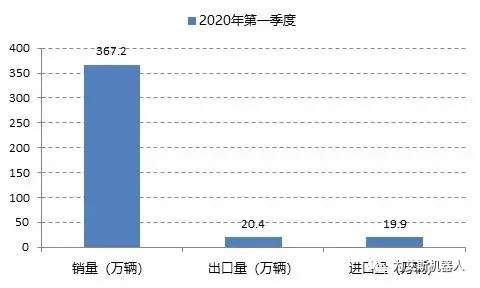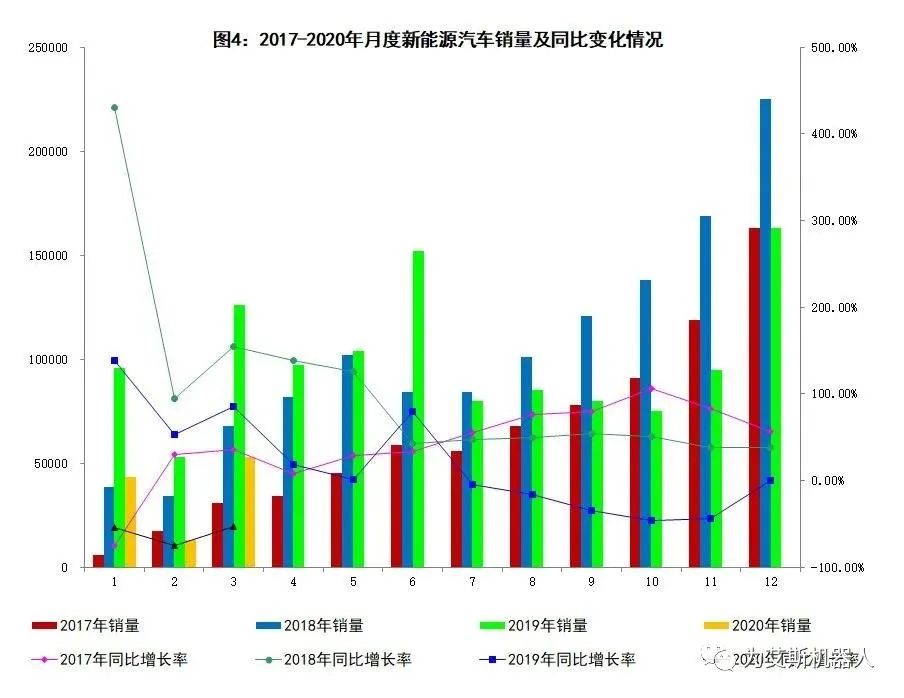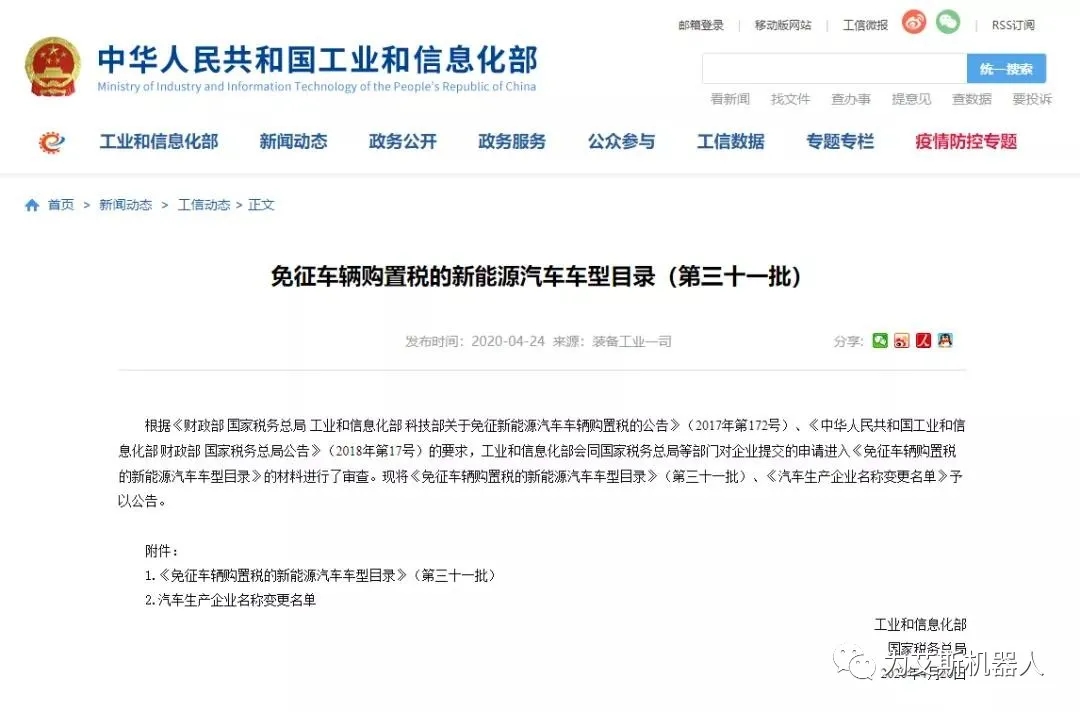With the support of the developing automotive industry, the automotive robot technology market is growing steadily. With the improvement of people's living standards, especially in developing countries, the demand for passenger cars and commercial vehicles will greatly increase, thus triggering a large demand for automobile production.
According to the latest research of Global Market Insights, the auto robot market will grow from about $4 billion to $6 billion by 2024. General Motors is developing intelligently and electrically. The higher level of automobile production will further promote the demand for automotive robots. The automobile enterprises begin to clear their inventory and carry out research, development and manufacturing of new technical products.
The unexpected epidemic broke the established track of the development and transformation of the automobile industry.
Global automobile market under the influence of epidemic situation
At present, the domestic epidemic situation has been preliminarily controlled, but the overseas epidemic situation is still spreading, and the situation of the global automobile industry is still not optimistic. As of April 27, 2020, there have been more than 2.81 million confirmed cases worldwide, of which the United States and Europe are the worst hit areas, and European and American enterprises have had to stop production. According to incomplete statistics, at present, about 38 multinational automobile enterprises and groups have closed or planned to close their factories, and the total number of factories has reached more than 150.
Due to the spread of the epidemic in Europe, auto sales in Italy, France and Spain fell the most seriously. GM, Ford and other auto companies withdrew their financial performance targets for 2020 and lowered their profit expectations. In addition, the three major car factories in Germany and the United States and the eight major car factories in Japan also stopped production, reduced production and changed production to different degrees. At the same time, more and more auto parts giants in Europe and the United States have shut down their factories, such as Bosch, Continental, Schaeffler, Marelli, Webasto, Vinier, ZF, Brebo, Pio, Magna, Michelin
The automobile supply chain is the hardest hit area of this epidemic. With the continuous escalation of the global COVID-19, the resumption of work of Chinese parts enterprises is delayed, and the logistics transportation is blocked. Therefore, the supply chain of some multinational enterprises is facing the risk of supply interruption. The traffic, transportation, population mobility and other regulatory measures strictly adopted by various countries not only affect the industrial production of various countries, but also challenge the increasingly integrated global industrial chain.
In order to ensure the normal operation of the company, in addition to the approved production of respirators by General Motors, more than 12 multinational automobile manufacturers, including Ford, Fiat Chrysler, Tesla, Rolls Royce, Volkswagen, Daimler, Honda, Toyota, Nissan, McLaren, Ferrari, have started the preparation and production of respirators.
Under the shadow of overseas epidemic, the global car market is in mourning. Up to now, the world's more than 150 car factories are in a "dormant" state, and the resumption period is still a question mark. A large number of overseas factories of transnational automobile enterprises are in a state of shutdown. On the contrary, China has become the region with the most stable production capacity in the world and a haven for the world's manufacturing industry at this stage.
China's strategy after the epidemic
However, from February 19 to March 30, the overall operating rate of Chinese auto industry enterprises has increased from about 60% to 97%, and the staff resumption rate has also increased from about 50% to 82%, which has basically recovered to the level of the same period last year.

(Source: China Robot Network)
The provincial governments have also successively introduced policies to stimulate the automobile market. According to incomplete statistics, since the beginning of February this year, as many as nine cities have issued documents to stimulate automobile consumption, including Foshan, Guangzhou and Zhuhai in Guangdong Province, Xiangtan and Changsha in Hunan Province, Hangzhou and Ningbo in Zhejiang Province, Nanchang in Jiangxi Province and Changchun in Jilin Province.
After the epidemic ends, there will be information factors of "retaliatory consumption" and "compensatory consumption", which will stimulate the consumption potential of the public. As the world's largest consumer market, the car market in 2020 may not be as pessimistic as expected.

(Source: Automobile Industry Association)
The data also proves that the domestic COVID-19 has been effectively controlled, the production and operation of enterprises have been recovered, and the domestic automobile market has gradually recovered from the trough in February. From the overall situation in the first quarter, the sales volume of automobiles was 3.672 million, down 42.4% year on year. The export volume was 204000, down 11.5% year on year. The import volume was 199000, down 23.2% year on year.
With the gradual implementation of the thirty first batch of national policies on new energy vehicles, such as vehicle purchase tax exemption, and the introduction of policies to promote automobile consumption by local governments, China's automobile market will speed up its recovery, and the production of upstream and downstream industries, such as robots, will also speed up. At the same time, the country has vigorously developed the Internet of Vehicles, industrial Internet industry applications and other related high-tech industries, and accelerated the pace of the implementation of robots in multiple industries.

(Source: Ministry of Industry and Information Technology)
And the foreign market will inevitably introduce relevant stimulus policies after the epidemic. According to the analysis, the global automobile industry may usher in a wave of small climax after the epidemic. This is undoubtedly good news for the new energy vehicle industry and robot industry.
In general, robots in the automotive industry still have a lot of room for development. With the popularization of new energy vehicles, major vehicle manufacturers will need to invest in the production line of electric vehicle plants. At present, this trend has been very obvious. Some automobile manufacturers are closing traditional factories and putting money into the layout of new energy vehicles.
Industrial robots will be widely used in the production of new energy vehicles, as well as some new technologies, such as artificial intelligence, 5G, cloud computing, etc. And robots are also changing to intelligence, including adaptive robots, cooperative robots, etc. It is believed that these intelligent robot products will win more car market shares.
Automobile production involves many links upstream and downstream, and the global spread of the epidemic will be a severe test for any automobile enterprise. Compared with other industries, automobile enterprises have relative advantages in terms of personnel, site and equipment, so at present, many automobile enterprises have successively switched to the production of anti epidemic materials. While doing their social responsibilities, they have accelerated the formation of the innovation ability of key technologies in the industrial chain cluster and promoted the transformation and upgrading of the automobile industry by increasing scientific and technological innovation and mode innovation. In the long run, after the innovation, transformation and development of the automobile industry, machine replacement is the best way out.




